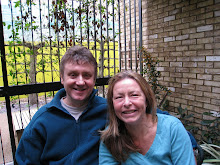Summer training is over and we're now engaged in activities to move a couple of the Ministry's projects along. About 100 donated laptops are being set up for moving out to those schools in the Rural Schools Solar Project phase 1 and the solar power kits are now in Asmara and ready for their arduous journeys to the far corners of Eritrea. So it looks as if I may be on the road again for a while quite soon.
Meanwhile the first attempt at the infrastructure for the MOE website is now done. We eventually went for a simple homegrown implementation with rudimentary content management for our initial Ministry-only offering as opposed to using a recognised heavier weight product such as Chisimba or Joomla. Now we need to both get agreement and gather page content from the Ministry's departments before we can open the site to the outside world, no small task - I can see it taking another few months and a lot of chasing people down!.
Asmara Observations
-------------------
Asmara is frequently described in terms of its Italian Art Deco architecture. We were sent a surprisingly positive article from the NY Times this week which contained all the usual cliches on the subject of sherbet-coloured buildings and the spaceship nature of the Fiat Tagliero together with a description of the train ride - all largely true. Yet, Eritrean village life is only just under the surface here and lack of money means that extended families often live together in spaces which were not exactly designed for the purpose.
Each working day we walk about 4 miles a day (2 round trips to and from work) on a back street route through some of what were Italian neighbourhoods - plenty of sherbet-coloured buildings. If you look behind the gates you see that the larger parcels of land, both residential and former industrial, house multiple families and chickens and goats are commonly kept (cockerels crowing in the morning are our frequent alarm clock). It's almost like there are numerous small villages in the city. Similarly the larger Italian-era buildings often house a number of families. Elsewhere empty land and gardens are used for growing vegetables - cabbages and corn amongst others.
P
Saturday, 11 October 2008
Subscribe to:
Post Comments (Atom)




No comments:
Post a Comment